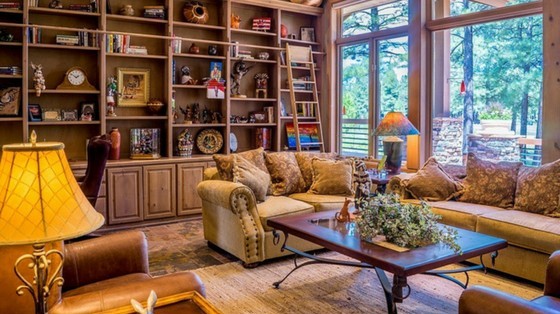Contents
Antique or Vintage Furniture
Do you have a home full of gorgeous old furniture passed down from generation to generation? Have you ever wondered whether you have antique or vintage furniture? Whether you’re a collector of old furniture or wanting to upcycle or sell your own, you’ll love this guide.
A Guide to Determining if Furniture is Antique or Vintage
Featured Image by Bedrck via Pixabay
The interior design world has many little buzzwords it likes to use and the word antique is one of them.
It instantly in our mind makes us think of very old, ornately decorated and extremely well-made furniture, which bears the test of time far better than modern mass-produced stuff and is seen as a good investment.
There is another word often heard in furniture circles, which is less well understood and can cause significant confusion when used incorrectly, and that word is vintage.
Defining an Antique
Because the words vintage and antique are so often misused or used interchangeably, it is important to be able to make a clear and distinct definition between the two.
One standard definition states that an antique is “an object which is more than one hundred years old and is valued for its aesthetic or historical significance.”
This means that it is not just about age, but also about the piece itself having some story behind it, almost giving it some sort of personality. In today’s parlance, the term tends to be bandied about far more loosely, especially in electronics, where even a phone a few years old is knocking on the door of the antique listings.
Defining Vintage
The term vintage in furniture is far harder to nail down. Originating from the wine industry, to tell the year the grapes were grown, there were both good vintages where the wine was worth more, and poor vintages where the wine was worth less.
Finding a good year for a piece of fine furniture to be made is obviously a laughable concept, so it is more practical to suggest that something vintage, comes from an era when a particular style was considered fashionable. It really goes beyond such a simple categorisation though, as the level and detail of the craftsmanship involved should also be considered a necessary factor.
Buying Antiques
It is important when buying antiques, especially if as an investment, to ensure you are purchasing from a reputable buyer, even more so if you are buying antique furniture online.
The cost of an antique is of course, subjective in nature, with their perceived value coming from both their age and geographical origin, as well as their rarity.
Going hunting for antiques at sales and fairs can be quite fun and entertaining and occasionally you can come across a real gem of a find.
It is definitely highly advisable to make sure you have a good list of questions ready to ask about the history of every piece and be very wary of any trader who is vague about the distinction between an antique and a vintage piece.
Antique Pricing
Something that is definitely an antique can expect to have a higher price as compared to the vintage things, but old does not necessarily mean gold.
An antique should have something striking and memorable about it, an elegance that comes clearly from a time long gone by, which impacts the price.
Obviously, a key consideration is being able to spot something genuinely aged, as there are a number of offerings in the marketplace, which are no more than copies. They have been artfully designed to look like they come from a different time and place, but sadly they have not, and sometimes only a trained eye can tell you if it is the real thing.
This article is published in partnership with Mediabuzzer.
What are you planning to do with your antique or vintage furniture?

